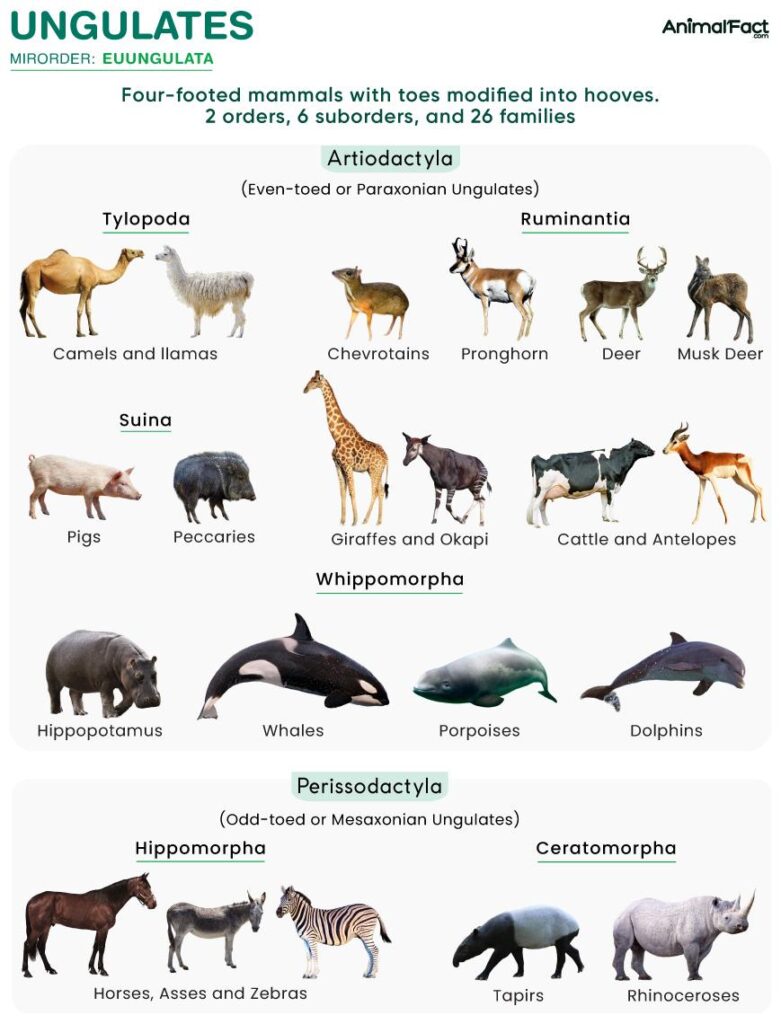A new study published in Nature reveals that two major ecological transformations over the past 60 million years were pivotal in shaping the evolutionary trajectory of ungulates, the hoofed mammals that include horses, deer, and cattle. By analyzing fossil records and environmental data, researchers have uncovered how shifts in climate and vegetation drove dramatic changes in ungulate diversity and adaptation. This groundbreaking research offers fresh insights into the complex interplay between Earth’s changing ecosystems and the evolution of one of its most successful mammal groups.
Two Major Ecological Shifts Redefined Ungulate Evolution Over 60 Million Years
Over the past 60 million years, the evolutionary trajectory of ungulates-a diverse group of hoofed mammals-has been profoundly influenced by two pivotal ecological transformations. The first shift, occurring during the late Paleocene to early Eocene, corresponded with a dramatic global warming event that reshaped habitats and food availability. This transition fostered the rise of forest-dwelling browsing ungulates, characterized by adaptations that optimized leaf and soft plant consumption. In contrast, the second major shift, spanning the late Miocene epoch, was marked by global cooling and the expansion of grasslands. This environmental change stimulated the diversification of grazing ungulates, equipped with high-crowned teeth and more efficient digestive systems to exploit abrasive grasses.
These ecological upheavals not only dictated dietary strategies but also influenced migration patterns, body size evolution, and locomotor adaptations. Key evolutionary innovations emerged, facilitating the exploitation of newly available niches. Some remarkable changes include:
- Enhanced limb structure for faster and more efficient movement across open terrain.
- Dental specialization for processing tougher, silica-rich grasses.
- Social behaviors geared toward herd formation as a defense mechanism in expansive environments.
| Ecological Shift | Timeline (Mya) | Main Impact | Ungulate Adaptation |
|---|---|---|---|
| Global Warming Event | 58 – 50 | Forest densification | Browsing specialization |
| Grassland Expansion | 12 – 5 | Open habitat proliferation | Grazing specialization |
How Climate Change and Habitat Transformation Drove Key Faunal Adaptations
Over millions of years, fluctuating climates and rapid environmental transformations fundamentally shaped the evolutionary trajectory of ungulates. As dense forests slowly gave way to expansive grasslands, species faced new survival challenges that demanded innovative adaptations. Many ungulates, once predominantly browsers within shaded woodland ecosystems, gradually transitioned to grazing lifestyles. This shift was accompanied by notable morphological changes such as the development of high-crowned teeth, optimized for processing abrasive grasses, and elongated limbs to enhance speed and endurance across open territories.
Key faunal adaptations included:
- Dental evolution: Transition from low-crowned (brachydont) to high-crowned (hypsodont) teeth that resisted wear from gritty vegetation.
- Limb modifications: Strengthening and lengthening bones to improve running efficiency amid expanding open habitats.
- Digestive specialization: Enhanced fermentation capabilities to cope with fibrous plant material dominant in their diets.
| Adaptation | Function | Ecological Driver |
|---|---|---|
| Hypsodont Teeth | Durable grazing tools | Spread of grassy biomes |
| Longer Limbs | Improved locomotion | Open landscapes & predators |
| Complex Stomach | Enhanced digestion | Fibrous diet adaptation |
These transformations mirror two pivotal ecological epochs-first, a post-Eocene cooling trend that fragmented forests and subsequently a mid-Miocene grassland expansion, both reshaping evolutionary pressures. The interplay of such environmental stressors fueled diversification as ungulates exploited new niches, showcasing evolution’s adaptive ingenuity through anatomical and physiological refinement.
Experts Recommend Integrating Paleontological Data to Predict Future Mammal Responses
To better anticipate how mammal populations may adapt or decline in the face of global environmental changes, researchers emphasize the undeniable value of paleontological records. These ancient datasets provide critical insights into how ungulate species responded to two major ecological shifts over the past 60 million years, revealing patterns of resilience and vulnerability that remain relevant today. By integrating fossil evidence with modern ecological models, scientists can create more robust predictions, accounting for long-term evolutionary pressures rather than relying solely on contemporary observations.
Key benefits of incorporating paleontological data include:
- Understanding extinction triggers: Identifying past environmental thresholds that led to faunal turnovers.
- Mapping adaptive radiation: Tracing how species diversified in response to climate oscillations and habitat changes.
- Informing conservation strategies: Highlighting historical refugia and migration corridors vital for species survival.
| Ecological Shift | Timeframe | Impact on Ungulates |
|---|---|---|
| Early Paleogene Cooling | ~56-34 million years ago | Rapid species turnover and morphological adaptations |
| Late Miocene Aridification | ~11-5 million years ago | Expansion of grazing ungulates and habitat specialization |
The Conclusion
The groundbreaking research detailed in “Two major ecological shifts shaped 60 million years of ungulate faunal evolution,” published in Nature, sheds new light on the pivotal environmental transformations that influenced the evolutionary trajectory of these diverse mammals. By unraveling how climate and habitat changes drove ungulate diversification and adaptation, the study not only deepens our understanding of past ecosystems but also offers valuable insights for anticipating how modern species might respond to ongoing ecological upheavals. As our planet faces unprecedented environmental challenges, such findings underscore the intricate link between ecology and evolution, reminding us of the enduring impact of Earth’s shifting landscapes on the future of biodiversity.
